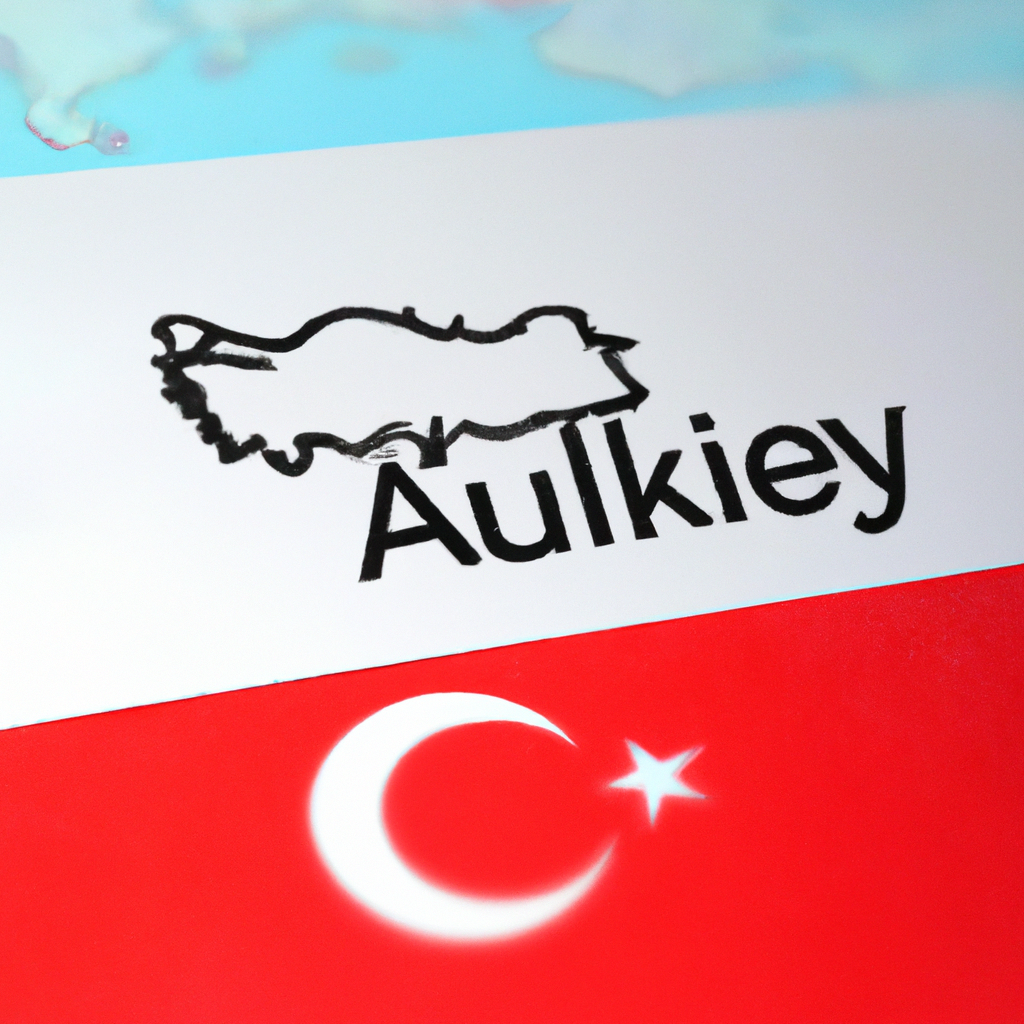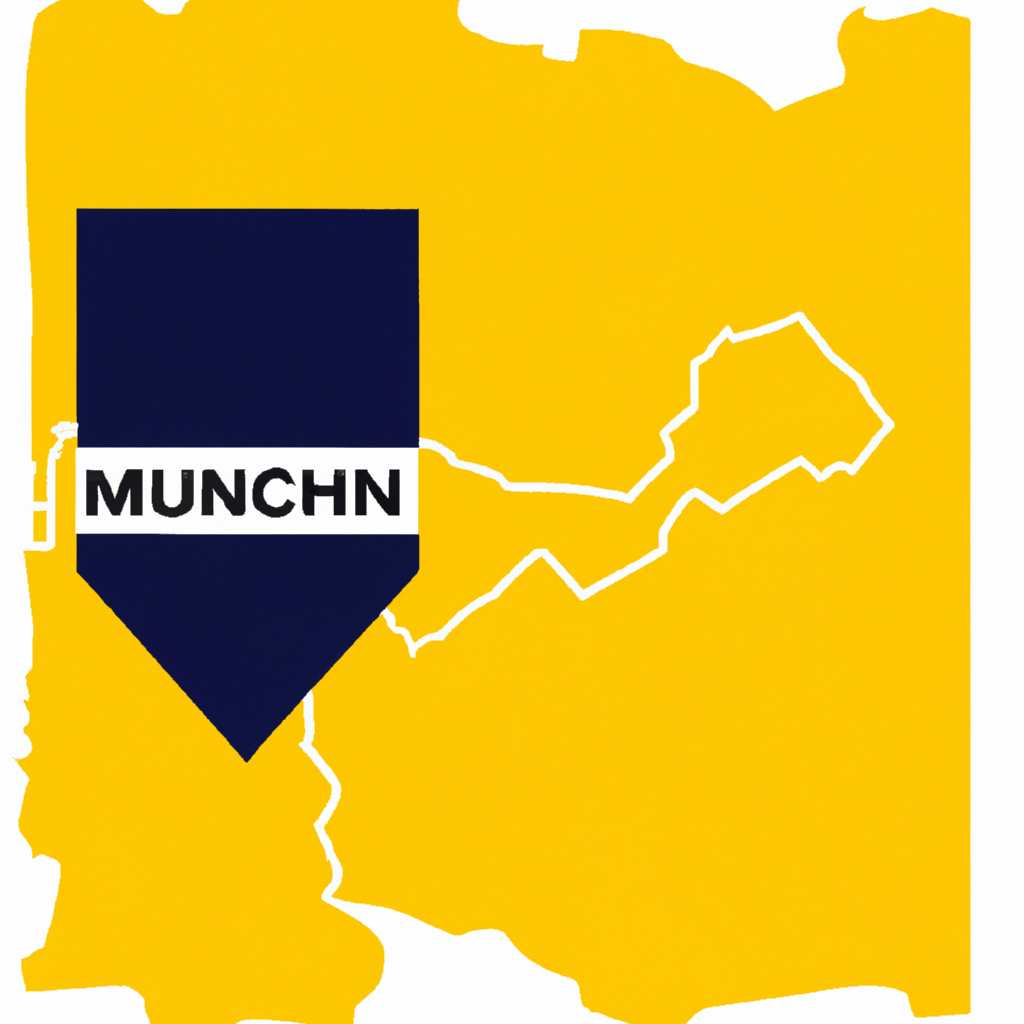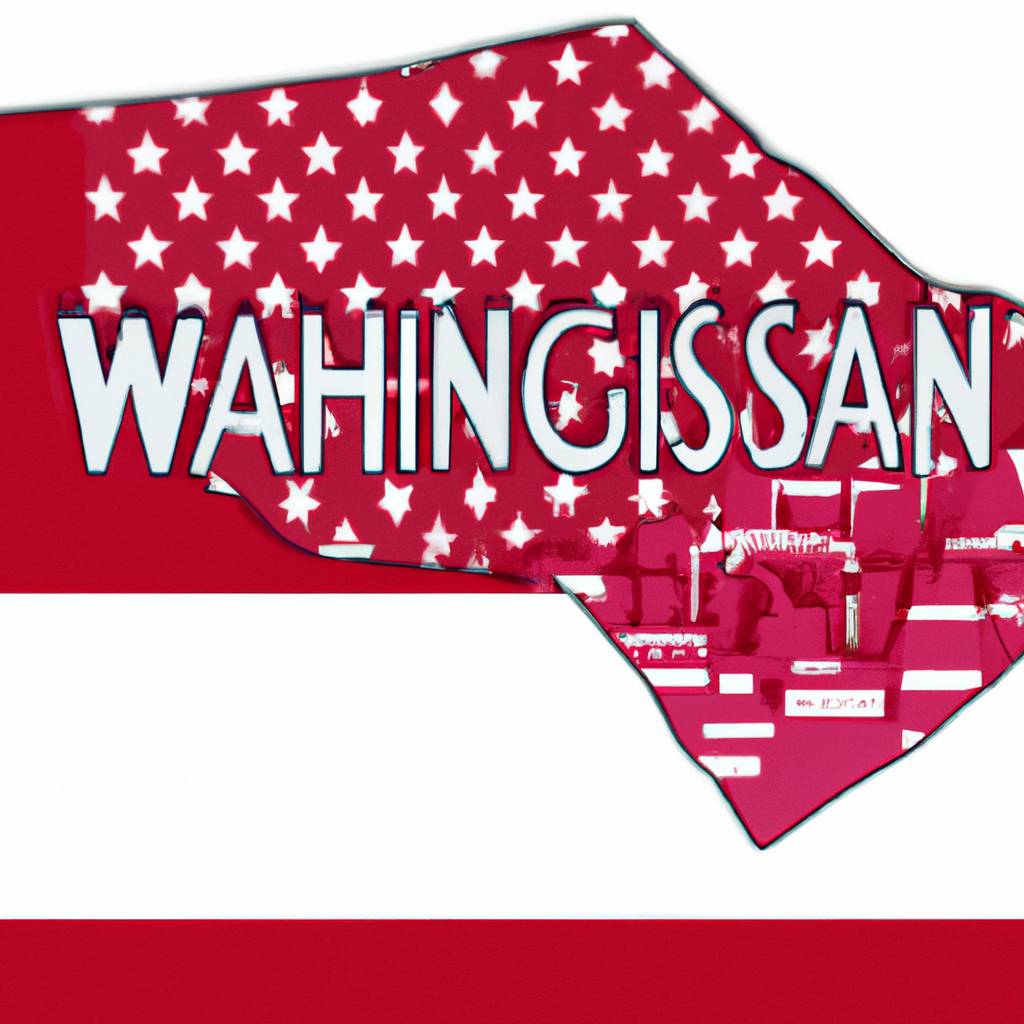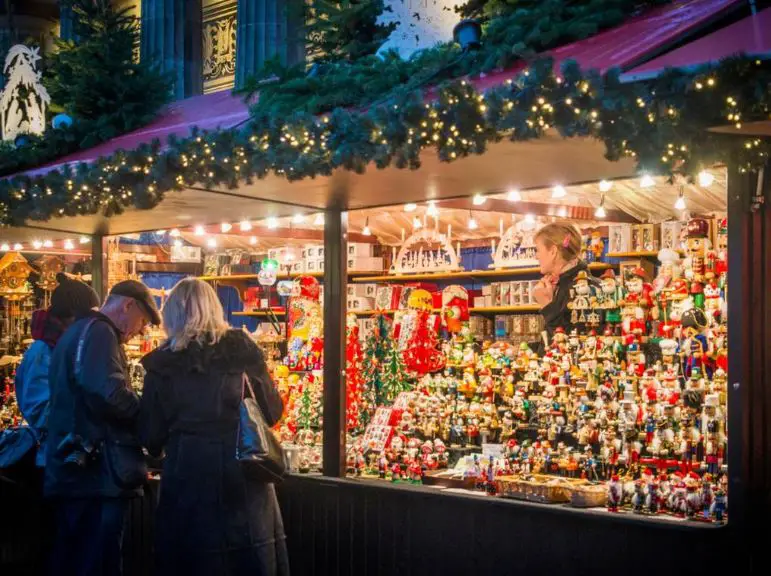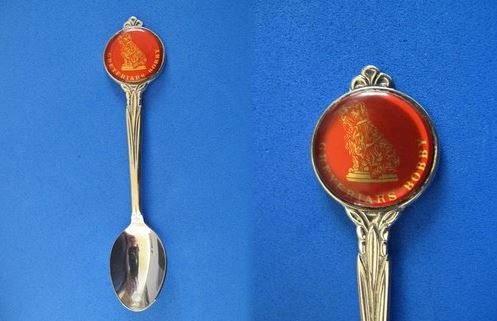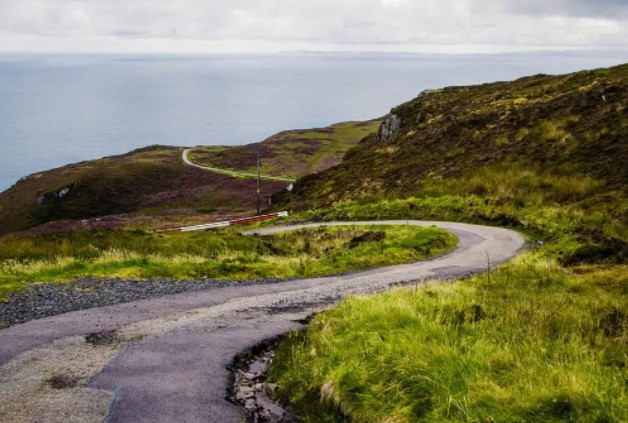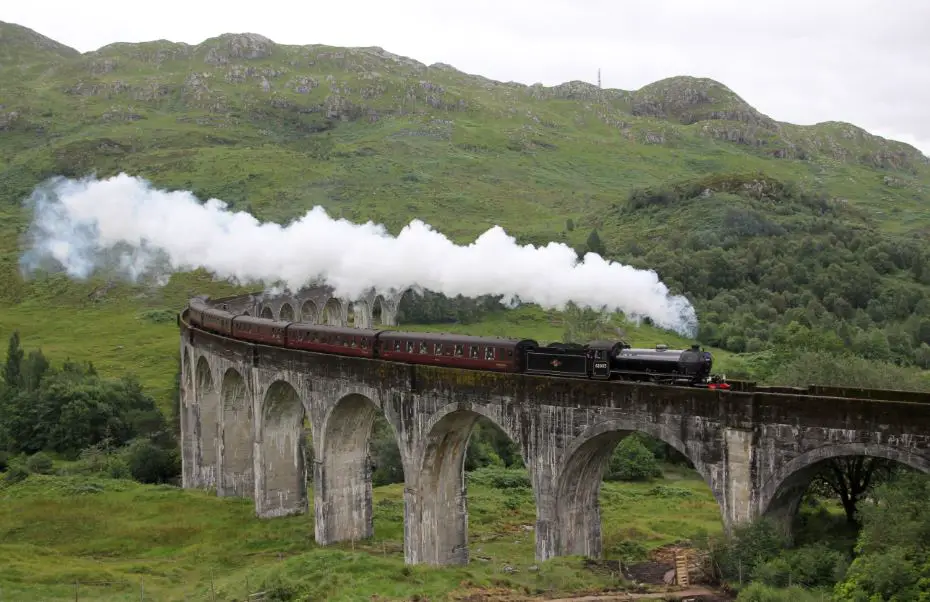Edinburgh, Scotland: Interesting Facts,History, Things to do,Why to Visit
Post ByAdequate Travel
Edinburgh, Scotland is a vibrant city full of culture and history. From the majestic hills overlooking the city to the charming cobblestone streets, it is no wonder Edinburgh is considered one of the most beautiful cities in the world. There are a variety of interesting facts about Edinburgh, its history, and things to do that make it a must-see destination. Edinburgh’s unique culture and character add to the city’s dynamic atmosphere and variety of activities. In addition to historical sites, museums, and art galleries, Edinburgh also provides its visitors with plenty of entertainment. With so much to offer, there are countless reasons to visit Edinburgh, Scotland. From its fascinating history, to its amazing scenery and landscape, to its unique culture and character, Edinburgh is truly a one-of-a-kind destination.
Scotland is a country located in the northern part of the United Kingdom. It has a population of around 5.5 million people and a land area of approximately 30,000 square miles. The capital city is Edinburgh and the largest city is Glasgow.Scotland has a rich history and is known for its breathtaking landscapes, including mountains, lochs, and picturesque valleys. It is also famous for its castles, such as Edinburgh Castle and Stirling Castle, which attract tourists from around the world.The country has a devolved government, with powers in areas such as education, healthcare, and tourism. Scotland's economy is diverse, with key industries including oil and gas, renewable energy, tourism, food and drink, and financial services.Scotland is known for its cultural heritage, including bagpipe music, traditional ceilidh dancing, and the Highland Games. It is also home to famous literary figures like Robert Burns and Sir Walter Scott, as well as renowned universities like the University of Edinburgh and the University of Glasgow.In recent years, there has been a growing movement for Scottish independence, with the Scottish National Party (SNP) advocating for a second referendum on independence from the UK. Brexit has also been a divisive issue, as Scotland voted to remain in the European Union in the 2016 referendum.Overall, Scotland offers a unique blend of history, culture, and natural beauty, making it a popular destination for tourists and a fascinating place to live.Discover unique facts about scotland, a destination filled with rich history and natural beauty.
Interesting facts
1. Scotland's Ancient History
Scotland has a rich and ancient history dating back thousands of years. The country was inhabited as early as the Stone Age, with evidence of settlements and burial sites still being found today. One notable example is Skara Brae, a Neolithic village that was discovered in the Orkney Islands and dates back over 5,000 years.
2. The Loch Ness Monster
Scotland is known for its breathtaking landscapes, including the famous Loch Ness. The Loch Ness Monster, also known as "Nessie," is a mythical creature that is believed by some to live in the deep waters of Loch Ness. Reports of the Loch Ness Monster have fascinated people for centuries, and numerous expeditions and investigations have been carried out to try to prove its existence.
3. Traditional Scottish Food
Scotland has a distinct cuisine with some interesting and unique dishes. One well-known Scottish dish is haggis, a savory pudding made from sheep's pluck (heart, liver, and lungs) mixed with spices, onions, and oatmeal, traditionally cooked in a sheep's stomach. Another popular Scottish food is the deep-fried Mars bar, a chocolate bar coated in batter and deep-fried, which gained international fame for its indulgent and unusual nature.
4. Scotland's Famous Castles
Scotland is home to numerous stunning castles that showcase the country's history and architecture. Edinburgh Castle, located on Castle Rock in the capital city, is one of Scotland's most iconic landmarks. It has played a significant role in Scotland's history and offers magnificent views of the city. Another notable castle is Eilean Donan Castle, located on a small island in Loch Duich. It is often considered one of the most picturesque castles in Scotland and has been featured in many films and TV shows.
5. The Kelpies
The Kelpies are a pair of 30-meter-high horse-head sculptures located in Falkirk, Scotland. They are inspired by the mythical Scottish water creatures called kelpies, which were said to shape-shift into horses and lure people into the water. The sculptures are made of steel and are an impressive sight, attracting visitors from around the world.
From museums to parks,scotland tourist attractions offer something for everyone, making it a versatile destination for all type of tourists.History of Scotland
Scotland's history stretches back thousands of years, with evidence of human habitation dating as far back as 8500 BC. Over the centuries, Scotland has played a significant role in shaping the political, cultural, and social landscape of Europe.1. Ancient Scotland:
Scotland's earliest known settlers were hunter-gatherers who lived off the land. Evidence from archaeological sites like Skara Brae in Orkney reveals the existence of organized communities as early as 3200 BC. During the Iron Age, Celtic tribes, such as the Picts, dominated much of Scotland.2. Roman Influence:
The Roman Empire sought to exert control over Britannia, including parts of Scotland. In AD 43, under Emperor Claudius, the Romans invaded southern Scotland. They built forts and walls, most notably Hadrian's Wall, to mark their northern frontier. However, the Romans failed to fully conquer Scotland, and the Antonine Wall, their further northern extension, was abandoned in AD 163.3. Kingdom of Alba:
After the departure of the Romans, Scotland saw the rise of various kingdoms. In the 9th century, Kenneth MacAlpin, King of Dalriada, united the Pictish and Gaelic kingdoms to form the Kingdom of Alba. Alba later evolved into the Kingdom of Scotland and established strong cultural and political ties with Ireland.4. Wars of Independence:
Scotland's history includes several conflicts with England known as the Wars of Independence. The most famous figure from this period is William Wallace, who led a rebellion against English rule in the late 13th century. Wallace was eventually captured and executed, but his legacy lived on, inspiring others like Robert the Bruce to continue the fight for Scottish independence.5. Union of the Crowns and Industrial Revolution:
In 1603, the Union of the Crowns occurred when King James VI of Scotland inherited the English throne, becoming James I of England. Although the crowns were united, Scotland was still technically an independent country. The 18th century brought significant changes, as Scotland embraced the Industrial Revolution, leading to rapid urbanization and economic growth.6. Act of Union and Devolution:
In 1707, the Act of Union was signed, officially uniting England and Scotland under the name Great Britain. The Act faced initial resistance in Scotland, but economic factors and political pressures eventually led to its implementation. However, Scotland retained a distinct legal and educational system. In 1999, devolution granted Scotland its own parliament, allowing for self-governance in various areas, including health, education, and justice.Scotland's history is rich and complex, with various periods of conflicts, cultural development, and economic change. Understanding this history helps explain Scotland's distinct identity and the ongoing pursuit of autonomy within the United Kingdom.Exploring the rich heritage of historical sites in scotland is a journey through time and culture.Famous Things of Scotland
1. Edinburgh Castle
Edinburgh Castle is one of the most iconic landmarks in Scotland and a popular tourist attraction. It is situated on Castle Rock, overlooking the city of Edinburgh. The castle has a rich history dating back to the 12th century and has witnessed numerous battles and royal events.2. Loch Ness
Loch Ness is a large freshwater lake located in the Scottish Highlands. It is renowned for the mythical creature known as the Loch Ness Monster, affectionately called "Nessie." The lake is surrounded by stunning landscapes and attracts visitors from around the world who hope to catch a glimpse of the elusive creature.3. The Royal Mile
The Royal Mile is a historic street in Edinburgh that stretches from Edinburgh Castle to the Palace of Holyroodhouse. It is lined with beautiful buildings, shops, and eateries, making it a lively and bustling area. The street is full of history and offers visitors a chance to explore stunning architecture and immerse in Scottish culture.4. The Forth Bridge
The Forth Bridge is an iconic railway bridge located near Edinburgh. It is a UNESCO World Heritage site and is renowned for its unique engineering design. The bridge spans the Firth of Forth and connects Edinburgh to Fife, providing breathtaking views of the surrounding landscapes.5. Bagpipes
Bagpipes are a traditional Scottish musical instrument that holds significant cultural importance. These instruments consist of reed pipes, a bag, and a chanter. Bagpipe music is often associated with Scotland and is frequently played at events like weddings, funerals, and traditional ceremonies.6. Scotch Whisky
Scotch whisky is famous worldwide and is considered a symbol of Scottish heritage. Scotland produces various types of whisky, known for their distinct flavors and production processes. Visitors can explore whisky distilleries and learn about the meticulous craftsmanship involved in creating this renowned spirit.7. Highland Games
The Highland Games are traditional Scottish events that showcase the country's rich culture and sporting traditions. These games include activities like caber tossing, hammer throwing, and Highland dancing. They are often accompanied by bagpipe performances and attract participants and spectators from all over.8. Isle of Skye
The Isle of Skye is a picturesque island located in the Inner Hebrides archipelago. Known for its rugged landscapes, dramatic cliffs, and quaint villages, it is a favorite destination among nature enthusiasts and photographers. The island offers stunning hiking trails, wildlife spotting opportunities, and breathtaking views, including the famous Old Man of Storr rock formation.9. Edinburgh Festival Fringe
The Edinburgh Festival Fringe is the world's largest arts festival, held annually in Edinburgh. It features a wide range of performances across various art forms, including theater, music, comedy, and dance. The festival attracts artists and spectators from all corners of the globe, creating a vibrant and diverse atmosphere.10. St. Andrews Golf Course
St. Andrews Golf Course is considered the birthplace of golf and one of the oldest and most prestigious golf courses in the world. Located in the town of St. Andrews in Fife, it offers an exceptional golfing experience and has hosted numerous major tournaments. Golf enthusiasts flock to this historic course to play and relish its rich heritage.Discover some unique facts about scotland that will leave you amaze and intrigue.Culture of Scotland
Scotland has a rich and diverse culture that is influenced by its history, geography, and the various groups of people who have inhabited the region over the years. Here are some key aspects of Scottish culture:
1. Scottish Gaelic Language
Scotland has two national languages, English and Scottish Gaelic. The Gaelic language, also known as Gàidhlig, is spoken by a small percentage of the population, mainly in the Scottish Highlands and Islands. It is an important part of Scottish heritage and is taught in some schools and universities.
2. Bagpipes and Traditional Music
The bagpipes are synonymous with Scottish culture and are considered one of Scotland's national instruments. They are often seen and heard at events like weddings, funerals, and Scottish festivals. Traditional Scottish music, including fiddle and accordion tunes, are also popular and have a distinct sound.
3. Highland Games
The Highland Games are a major part of Scottish culture and take place in various communities throughout the country. These events celebrate Scottish sports, music, and dance, and are characterized by games such as caber tossing, hammer throwing, and Highland dancing.
4. Tartan and Kilts
Tartan is a traditional plaid pattern associated with Scottish clans and families. Kilts, which are knee-length skirts made from tartan fabric, are often worn by men at formal events and special occasions. Each tartan design represents a specific clan or region, and the wearing of tartan is a symbol of Scottish pride and heritage.
5. Whisky and Distilleries
Scotland is known worldwide for its production of whisky, also spelled as whiskey. Scotch whisky is renowned for its quality and distinct taste. There are numerous distilleries across Scotland that offer tours and tastings, allowing visitors to learn about the production process and sample different types of whisky.
6. Ceilidhs and Traditional Dancing
Ceilidhs are social gatherings that involve Scottish traditional music, dancing, and storytelling. These events bring people together to enjoy Scottish country dancing, which includes dances like the Gay Gordons and the Dashing White Sergeant. Ceilidhs are known for their lively atmosphere and are a way for people to connect with their Scottish heritage.
These are just a few examples of the rich cultural heritage of Scotland. The country's history, landscapes, and traditions all contribute to a unique and vibrant culture that is deeply cherished by its people.Immerse yourself in the local culture by exploring scotland's top-rated tourist attractions.Cuisine of Scotland
The cuisine of Scotland is known for its hearty and rich flavors, influenced by both its land and sea resources. It combines traditional ingredients, such as oats, barley, potatoes, game meats, seafood, and dairy products, with creative cooking techniques. Scottish cuisine has a long history and is deeply rooted in the country's culture and heritage.
Key Components of Scottish Cuisine:
1. Oats: Oats are a staple in Scottish cuisine and are used to make popular dishes like porridge, oatcakes, and haggis. The Scottish are known for their whisky porridge, which is made by cooking oats with Scotch whisky.
2. Barley: Barley is another important grain used in Scottish cooking. It is used to make soups, stews, and traditional barley scones. Barley is also a key ingredient in Scotland's national dish, haggis.
3. Potatoes: Potatoes are widely used in Scottish dishes, whether mashed, roasted, fried, or boiled. They are a common accompaniment in many traditional meals and are an essential component of dishes like stovies and tattie scones.
4. Game Meats: Scotland's vast landscape provides ample opportunities for hunting, resulting in a variety of game meats being incorporated into the cuisine. Game meats like venison, rabbit, and grouse are commonly enjoyed in dishes such as venison stew or game pie.
5. Seafood: Scotland is known for its abundance of seafood, thanks to its extensive coastline. Scottish cuisine features various seafood dishes, including smoked salmon, haddock, trout, mussels, and oysters. Cullen skink, a hearty smoked haddock and potato soup, is a popular traditional dish.
6. Dairy Products: Scotland is known for its high-quality dairy products, such as cheese, butter, and cream. Scotch butter and Scottish cheese, like cheddar and Crowdie, are widely used in Scottish cooking. Cranachan, a traditional dessert, incorporates raspberries, whipped cream, honey, and oatmeal.
Examples of Scottish Dishes:
1. Haggis: Haggis is considered Scotland's national dish. It is a savory pudding made from a mixture of sheep's heart, liver, and lungs, combined with oats, onions, and various spices. It is traditionally served with neeps and tatties (mashed turnips and potatoes).
2. Scotch Broth: Scotch broth is a hearty soup made with lamb or mutton, barley, carrots, potatoes, and various vegetables. It is a popular dish that is often enjoyed during the colder months.
3. Cullen Skink: Cullen skink is a creamy soup made with smoked haddock, potatoes, and onions. It is often served with crusty bread and is a comforting favorite among locals and visitors alike.
4. Cranachan: Cranachan is a traditional Scottish dessert made with raspberries, whipped cream, honey, and toasted oatmeal. It is often enjoyed during special occasions and celebrations.
5. Fish and Chips: While not exclusive to Scottish cuisine, fish and chips are a beloved dish in Scotland. Freshly caught fish, typically haddock or cod, is coated in batter and deep-fried until crispy. It is served with thick-cut chips (French fries) and often accompanied by tartar sauce.
Scottish cuisine offers a unique blend of simple yet flavorful dishes that highlight the country's natural resources and culinary traditions. From hearty stews to delicate seafood dishes, Scottish cuisine provides a taste of the country's rich history and diverse landscapes.
scotland tourist attractions offer a diverse range of experiences for every traveler.1. Explore Edinburgh
Edinburgh, the capital of Scotland, is a city filled with history, stunning architecture, and vibrant culture. Visit the iconic Edinburgh Castle, walk along the Royal Mile, and explore the charming neighborhoods of Old Town and New Town.
Example points to do in Edinburgh:
- Visit Edinburgh Castle and learn about its rich history.
- Take a stroll along the Royal Mile, lined with shops, pubs, and historical sites.
- Explore the charming streets and hidden closes of Old Town.
- Visit the Scottish Parliament building and Holyrood Palace.
2. Discover the Scottish Highlands
The Scottish Highlands offer breathtaking landscapes, serene lochs, and captivating castles. Take a road trip through the highlands and witness stunning vistas, visit famous Loch Ness, and explore ancient castles.
Example points to do in the Scottish Highlands:
- Take a scenic drive along the North Coast 500 route.
- Go hiking or mountain biking through the magnificent Glen Coe.
- Visit the famous Eilean Donan Castle.
- Take a boat trip on Loch Ness and search for the legendary Loch Ness Monster.
3. Visit Isle of Skye
The Isle of Skye is a picturesque island with stunning landscapes, dramatic cliffs, and mystical charm. It offers opportunities for scenic walks, wildlife spotting, and exploring quaint villages.
Example points to do on the Isle of Skye:
- Explore the Fairy Glen, a whimsical landscape with cone-shaped hills and magical atmosphere.
- Visit the famous Old Man of Storr, a magnificent rock formation.
- Take a walk along the Quiraing, a stunning geological formation.
- Explore the charming village of Portree with its colorful houses and harbor.
4. Experience Scottish Whisky
Scotland is known for its world-class whisky production. Take a whisky tour and visit distilleries to learn about the whisky-making process, sample different types of Scotch whisky, and appreciate the flavors and aromas.
Example points for experiencing Scottish whisky:
- Go on a guided tour of a whisky distillery, such as Glenfiddich or Dalwhinnie.
- Participate in tasting sessions to sample different types of Scotch whisky.
- Learn about the history and craftsmanship behind whisky production.
- Visit whisky bars in cities like Edinburgh and Glasgow to taste a wide variety of whiskies.
5. Explore Glasgow
Glasgow is a vibrant city with a rich music, arts, and cultural scene. Explore the city's museums, galleries, and Victorian architecture, and enjoy a thriving music and nightlife scene.
Example points to do in Glasgow:
- Visit the Kelvingrove Art Gallery and Museum to admire its extensive art collection.
- Explore the cultural district of Merchant City with its unique shops and boutiques.
- Discover the impressive Glasgow Cathedral and the nearby Necropolis.
- Enjoy live music in one of Glasgow's numerous music venues.
Climate of Scotland
Scotland has a temperate maritime climate, which is influenced by its location in the northernmost part of the British Isles and the surrounding waters of the Atlantic Ocean and North Sea. The climate is characterized by mild winters and cool summers, with relatively high levels of rainfall throughout the year. The variation in weather patterns can be attributed to the country's rugged topography and the presence of different air masses.
1. Temperature and Seasons
Scotland generally experiences mild temperatures, with average winter temperatures ranging from 1 to 6 degrees Celsius (34 to 43 degrees Fahrenheit) and average summer temperatures ranging from 12 to 20 degrees Celsius (54 to 68 degrees Fahrenheit). The western coastal areas tend to be slightly warmer due to the influence of the Gulf Stream, a warm ocean current that flows northeastwards along Scotland's west coast.
2. Rainfall
Rainfall in Scotland is fairly evenly distributed throughout the year, with no distinct dry season. The west coast and mountainous regions receive the highest amount of rainfall, while the east coast is generally drier. The western Highlands and Islands are particularly known for their wet climate, with annual rainfall exceeding 2,000 millimeters (79 inches) in some areas.
3. Wind
Scotland experiences strong winds, particularly during the winter months. The prevailing wind direction is southwest to west, meaning that coastal areas on the west coast are often subject to more wind exposure. The mountainous terrain also contributes to the creation of localized wind patterns.
4. Fog and Mist
Coastal and mountainous areas of Scotland are prone to fog and mist, especially during autumn and winter. The combination of moist air from the Atlantic Ocean and temperature inversions can lead to the formation of dense fog and mist, reducing visibility in certain areas.
5. Climate Variations
The climate in Scotland can vary significantly depending on the region and altitude. The west coast and islands tend to have a milder climate due to the influence of the Gulf Stream. The northern parts of Scotland, including the Highlands, experience colder temperatures and heavier snowfall during winter months. The east coast and lowland areas generally have a drier and slightly cooler climate compared to the west.
Overall, the climate of Scotland is influenced by a combination of its northern latitude, maritime location, topography, and proximity to ocean currents. These factors contribute to the country's mild temperatures, abundant rainfall, strong winds, and occasional fog and mist. The variation in climate across different regions of Scotland adds to its diverse and scenic landscapes.scotland tourist attractions offer a diverse range of experiences for every traveler.Popular Activities in Scotland
Scotland offers a wide range of popular activities that cater to various interests and preferences. Whether you enjoy outdoor adventures, exploring historical sites, or immersing yourself in culture and tradition, there is something for everyone to enjoy in this beautiful country.1. Hiking and Munro Bagging
Hiking in Scotland is a favorite activity among both locals and tourists. The country boasts stunning landscapes, from rugged mountains to picturesque lochs and enchanting forests. It is home to numerous hiking trails, including the famous West Highland Way and the Skye Trail. Munro Bagging is a popular pursuit for those seeking a challenge, as they strive to conquer the country's 282 mountains that are over 3,000 feet high.2. Whisky Tasting and Distillery Tours
Scotland is renowned for its whisky production, and whisky tasting is a must-do experience for enthusiasts and newcomers alike. Many distilleries across the country offer guided tours, where visitors can learn about the whisky-making process, explore historic distilleries, and sample a variety of Scotch whiskies. Examples include the Glenfiddich Distillery in Dufftown and the Talisker Distillery on the Isle of Skye.3. Exploring Castles and Historic Sites
Scotland's rich history is reflected in its impressive selection of castles and historic sites. From the iconic Edinburgh Castle to the imposing Dunnottar Castle, there are countless locations to visit and immerse yourself in the country's past. The Stirling Castle is another significant attraction, offering breathtaking views and fascinating insights into Scottish history.4. Golfing in Scotland
Scotland is considered the birthplace of golf, and it is home to renowned golf courses that attract players from around the world. St Andrews, known as the "Home of Golf," offers historic courses and the coveted Old Course. Other notable courses include Royal Dornoch, Muirfield, and Carnoustie, where the prestigious Open Championship has been held.5. Festivals and Events
Scotland hosts a range of vibrant festivals and events throughout the year, showcasing its culture, music, and arts. The Edinburgh Festival Fringe is the world's largest arts festival, featuring thousands of performances across various genres. The Highland Games, held in different regions, offer a mix of traditional sports, music, and dancing. The Royal Edinburgh Military Tattoo is a captivating spectacle with an incredible display of music and fireworks set against the backdrop of Edinburgh Castle.Plan your trip with a list of the best things to do in scotland, catering to all interests.Nightlife in Scotland
1. Vibrant Cities
Scotland boasts several vibrant cities with bustling nightlife scenes. Edinburgh, the capital city, is known for its lively pubs, clubs, and bars. The city has a diverse range of venues, from traditional Scottish pubs that offer live folk music to trendy nightclubs hosting international DJs. Glasgow, another popular destination, also offers an exciting nightlife with a wide selection of bars, pubs, and clubs catering to different tastes. Both cities have a vibrant atmosphere with plenty of options for late-night entertainment.
2. Traditional Pubs
Scotland is famous for its traditional pubs, which are a significant part of its nightlife culture. These pubs offer a cozy and relaxed atmosphere, perfect for socializing and enjoying a pint of local beer or whisky. Many traditional pubs also feature live music sessions, showcasing Scottish folk music talents. These venues are excellent for those seeking an authentic Scottish experience and a chance to mingle with locals and fellow travelers.
3. Whisky Tastings
Scotland is renowned for its whisky production, and experiencing whisky tastings is a popular activity for tourists and locals alike. Many bars and whisky establishments offer guided tastings, where you can sample a variety of different whiskies while learning about the history, production methods, and characteristics of each whisky. Whether you are a whisky enthusiast or just curious to learn more, a whisky tasting can be a great way to spend an evening in Scotland.
4. Festivals and Events
Scotland hosts numerous festivals and events throughout the year that contribute to its vibrant nightlife. The Edinburgh Festival Fringe, the world's largest arts festival, takes place in August and attracts performers and visitors from all over the globe. The Glasgow International Comedy Festival, Celtic Connections, and Edinburgh's Hogmanay are just a few examples of other popular events that offer a fantastic nightlife experience with live performances, concerts, and entertainment.
5. Casino Venues
For those who enjoy a bit of gambling, Scotland has several casino venues where you can try your luck and enjoy an entertaining night out. The country's major cities, such as Edinburgh and Glasgow, house a few renowned casinos offering a range of games, including blackjack, poker, roulette, and slot machines. In addition to gaming, these venues often have bars, restaurants, and live entertainment, making them a popular choice for a lively evening.
In summary, Scotland offers a diverse and exciting nightlife scene. With vibrant cities, traditional pubs, whisky tastings, festivals and events, as well as casino venues, there is something to suit everyone's preferences. Whether you are looking for a traditional pub experience or an energetic night of dancing, Scotland has plenty to offer for an unforgettable night on the town.Discover the untold stories behind scotland unique facts, and historical treasures.Reasons to Visit Scotland
Scotland is a stunning country with a rich history, breathtaking landscapes, vibrant cities, and unique cultural experiences. Here are some compelling reasons to visit Scotland:1. Natural Beauty
Scotland is renowned for its stunning landscapes and natural beauty. From the rugged and majestic Scottish Highlands to the picturesque lochs, such as Loch Ness and Loch Lomond, there are countless natural wonders to explore. The Isle of Skye offers dramatic scenery, while the Cairngorms National Park is home to diverse wildlife and beautiful mountains.
2. Historical Sites
Scotland is steeped in history, with numerous ancient castles, ruins, and historical sites dotting its landscape. Visit Edinburgh Castle, a magnificent fortress that offers panoramic views of the city, or explore Stirling Castle, the childhood home of Mary Queen of Scots. The prehistoric village of Skara Brae and the standing stones of Calanais are also fascinating historical sites.
3. Whisky Distilleries
Scotland is famous for its whisky, and visiting a traditional distillery is a must for whisky enthusiasts. Take a tour of the Glenfiddich Distillery in Speyside or the Talisker Distillery on the Isle of Skye to learn about the whisky-making process and sample some of Scotland's finest single malts.
4. Vibrant Cities
Scotland boasts vibrant cities that blend modernity with history. Edinburgh, the capital, is famous for its stunning architecture, world-class festivals like the Edinburgh Festival Fringe, and the iconic Royal Mile. Glasgow offers a thriving music and arts scene, while Aberdeen is known for its granite architecture and stunning coastal views.
5. Outdoor Activities
Outdoor enthusiasts will find plenty to do in Scotland, thanks to its diverse landscape. Enjoy a hike up Ben Nevis, the highest mountain in the British Isles, or hike the West Highland Way, a long-distance trek through some of Scotland's most breathtaking scenery. The country also offers opportunities for cycling, golfing, fishing, and wildlife spotting.
Overall, Scotland is a destination that caters to a wide range of interests and offers a unique blend of natural beauty, history, and vibrant culture. Whether you are a nature lover, history buff, whisky enthusiast, or simply seeking adventure, Scotland has something for everyone.Whether you're a history buff or an adventure seeker, scotland has an attraction for you. So, don't miss the chance to visit popular places in scotlandNumber of days required to visit Scotland
The number of days required to visit Scotland can vary depending on several factors such as the places you want to visit, the activities you want to engage in, and the pace at which you prefer to travel. However, a general guideline can be provided to help you plan your trip effectively.
Factors to Consider
- Places to Visit: Scotland offers a diverse range of attractions, including historic sites, stunning landscapes, and vibrant cities. The more places you wish to explore, the longer your trip should be.
- Activities: If you plan to participate in outdoor activities like hiking, golfing, or exploring the numerous whisky distilleries, you should allocate additional time.
- Travel Pace: Some travelers prefer a relaxed pace, spending more time in each location to fully experience and immerse themselves in the culture. Others prefer a faster pace, covering more ground in a shorter period.
General Guidelines
Here are some general guidelines to consider when planning the number of days required for your visit to Scotland:
- If you have limited time and want to get a taste of Scotland, a minimum of 3-4 days is recommended. This timeframe would allow you to visit popular attractions such as Edinburgh, the Highlands, and Loch Ness.
- For a more extensive trip, including major cities like Edinburgh, Glasgow, and Inverness, as well as exploring the Isle of Skye and the scenic Highlands, a minimum of 7-10 days would be ideal.
- If you intend to engage in specific activities like hiking the West Highland Way or visiting multiple whisky distilleries, you should allocate additional days accordingly.
Ultimately, the duration of your visit to Scotland depends on your personal preferences and priorities. It is essential to allow yourself enough time to fully explore and experience the beauty and culture that Scotland has to offer. So, plan your itinerary carefully and consider the factors mentioned above to make the most of your trip.
Example:
Heading: Places to Visit
Paragraph: Scotland offers a wide range of places to visit, including Edinburgh Castle, the Isle of Skye, Loch Lomond, and Stirling Castle. Each of these destinations has its own unique charm, history, and attractions that require time to explore and appreciate.
Discover the untold stories behind scotland unique facts, and historical treasures.Significance of Scotland
Scotland holds significant importance in various aspects, including its history, culture, natural landscapes, and economy.
1. Historical Significance
Scotland has a rich history, embracing ancient Celtic tribes, medieval kingdoms, and the Scottish Enlightenment, which played a crucial role in shaping modern society. Edinburgh Castle, Stirling Castle, and the Culloden Battlefield are notable historical landmarks in Scotland.
2. Cultural Significance
Scotland has a unique and vibrant cultural heritage that encompasses music, dance, literature, and traditional celebrations. The bagpipes, kilts, Highland games, and traditional ceilidh dances are examples of Scotland's distinctive cultural elements.
3. Natural Beauty
Scotland's extraordinary landscapes provide breathtaking scenery, attracting tourists from around the world. The Highlands and Islands, Loch Ness, Isle of Skye, and the iconic Ben Nevis are some of the natural wonders Scotland offers.
4. Contributions in Literature and Education
Scotland has produced numerous influential writers and intellectuals such as Robert Burns, Sir Walter Scott, and Robert Louis Stevenson. It is also home to esteemed universities such as the University of Edinburgh and the University of Glasgow, contributing to the field of academia.
5. Economic Significance
Scotland is renowned for its whisky production, exporting famous Scotch whiskies globally. The country also benefits from industries like oil and gas, renewable energy, tourism, and financial services, contributing significantly to its economy.
Overall, Scotland's significance can be seen in its historical, cultural, natural, literary, educational, and economic contributions, making it an essential part of the global community.From hidden gems to iconic landmarks, scotland has something for every traveler's taste.FAQ's of Scotland
1. What is the capital city of Scotland?
Edinburgh is the capital city of Scotland. It is known for its rich history, stunning architecture, and cultural festivals such as the Edinburgh Festival Fringe.
Examples:
- Edinburgh Castle, a historic fortress located on Castle Rock, is a popular tourist attraction.
- The Royal Mile, a famous street in Edinburgh, is lined with shops, restaurants, and historic landmarks.
2. What is the currency used in Scotland?
The currency used in Scotland is the British Pound Sterling (£). Scottish banknotes are also accepted throughout the country.
Examples:
- Bank of Scotland, Royal Bank of Scotland, and Clydesdale Bank issue their own versions of pound sterling banknotes.
- The Bank of England notes are also widely accepted and can be used in Scotland.
3. What is the national emblem of Scotland?
The national emblem of Scotland is the thistle. This prickly purple flower has been a symbol of Scotland since at least the 15th century.
Examples:
- The thistle is often depicted on Scottish heraldry, coins, and official emblems.
- The Order of the Thistle is the highest chivalric order of knighthood in Scotland.
4. What is the official language of Scotland?
The official languages of Scotland are English and Scottish Gaelic. English is spoken by the majority of the population, while Scottish Gaelic is mainly spoken in the northwest Highlands and the Western Isles.
Examples:
- English is used in government, education, and daily life across most of Scotland.
- Gaelic is still spoken by some communities, and efforts are being made to preserve and promote the language.
5. What are some famous Scottish landmarks?
Scotland is famous for its stunning landmarks and natural beauty. Some notable landmarks include:
Examples:
- Loch Ness: A large freshwater lake renowned for the mythical Loch Ness Monster.
- Ben Nevis: The highest mountain in the British Isles, attracting hikers and climbers.
- The Isle of Skye: Known for its dramatic landscapes, including the iconic Old Man of Storr rock formation.
- The Edinburgh Castle: A historic fortress overlooking the city of Edinburgh.
- The Glenfinnan Viaduct: A picturesque railway bridge featured in the Harry Potter films.
- The Stirling Castle: A well-preserved medieval castle of great historical significance.
Step back in time as you visit the historical sites in scotland, where the past comes alive.

